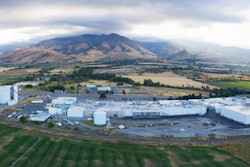The food and beverage manufacturing’s workforce is struggling with what some are calling the double gap. With more automation in plants, the industry is largely struggling to find qualified, skilled laborers that can operate the equipment. The other gap is being caused by the so-called gray wave — the baby boomers retiring from food and beverage plants now and for the next few years.
To overcome this double whammy, the industry will have to figure out how to attract and train millennial employees, and fast. In this Q&A with Dan Lawrence, director of marketing for Simutech Multimedia, he suggests part of the solution might be new training methods in the manufacturing industry, including the use of simulation.
PFW: What is simulation training?
Lawrence: Simulation training is a form of training that has been used for almost a century to train pilots, by replicating the real-life scenarios of flight. In manufacturing, simulation training provides a safe and effective tool to learn techniques and approaches in real life conditions, without the pressure or danger.
PFW: What are the benefits of using simulation to train food and beverage plant workers?
Lawrence: With customers demanding healthier foods, we hear many, if not all, of our food and beverage clients tell us how important it is to provide their customers with fresh products. From farm to table, there is a lot at play, from picking to cleaning to prepping to cooking to packaging and distributing. All this effort requires coordination, reliance of automation and heating/cooling equipment.
That means there is very little room for hands-on training, which may cause downtime, equipment malfunctions, safety errors and a broken supply chain.
Simutech Multimedia helps manufacturing companies achieve their maintenance training goals through a realistic, hands-on representation of the manufacturing equipment and environment.
Through simulation training, food and beverage manufacturers and their maintenance workers can learn in a safe and reliable way how to maintain and troubleshoot equipment, so there’s less downtime, increased output and a fulfilled supply chain.
PFW: How can food and beverage manufacturers use simulation training to educate and engage employees?
Lawrence: Similar to how simulation training was initially created because there was a need to safely and efficiently train a vast number of pilots during the Second World War, we see the need now more than ever for simulation training to help with the evolving skills gap in the manufacturing industry.
Experienced professionals are hitting retirement age in record numbers, and new hires lack the skills to troubleshoot complex malfunctions. But simulation training bridges the skills gap faster by giving staff the skills they need to maintain and troubleshoot complex manufacturing equipment quickly and safely.
We have also noticed through our data that even experienced professionals can be overwhelmed by the electrical components in production line equipment, which simulation training can help solve.
PFW: Some workers might be resistant to using increased technology, such as simulation training. What are some of the ways food and beverage manufacturers can navigate this type of situation?
Lawrence: Of course, most new technologies face a bit of resistance, which is why simulation training stands out from other forms of learning. Simulation training’s game-like appearance makes it easy and fun to learn, which ultimately removes the burden of learning a new technology for both veterans and new hires.
This is also a great solution for the up-and-coming workforce that grew up with video and computer games. They learn better with computer simulations and report more satisfaction with the learning process.
PFW: Anything else you would like to comment on regarding using simulation to train plant floor workers?
Lawrence: In addition to training, simulation solutions provide executives and managers with a wealth of data to help with their decision making. With a detailed view on their maintenance workforce, this helps them identify the professionals from the staff that needs more training.
Some solutions, including ours, also allow manufacturers to scientifically test and identify potential hires during the recruitment stage.
For more information: Simutech Multimedia, www.simutechmultimedia.com, 866.942.9082























